If you’re like me, the thought of making homemade pasta is right up there with the thought of knitting your own clothes or building your own car. Sure, theoretically, it’s good. Other people might try it, and when they do, you might think it’s kind of cool.
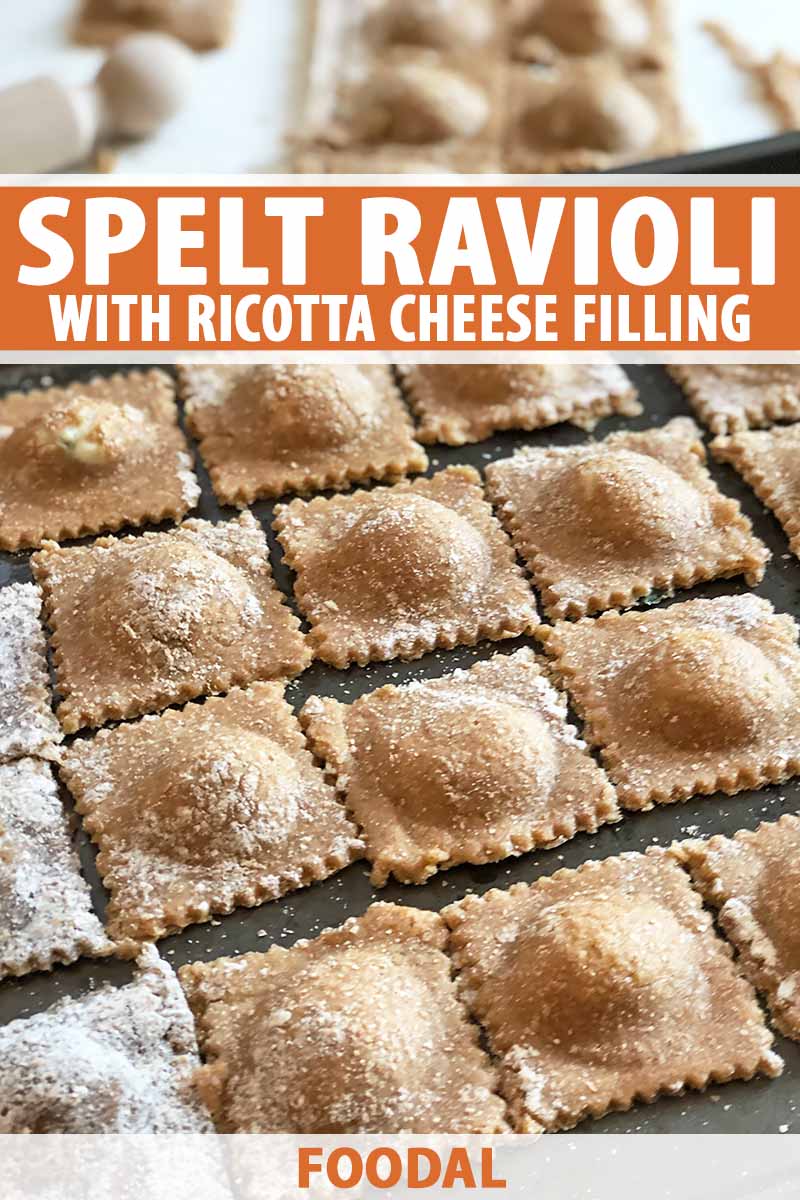
But let’s be honest: it’s also unnecessary, over-involved, time-consuming, and – for the most part – way out of your league.
Besides, that’s why there are shopping malls! And car dealerships! And, hello? Grocery stores with ready-made pasta that you only need to boil. Listen, I know.
The thought of making homemade pasta seems daunting to many of us. But the mere mention of it sends others out to buy the latest pasta maker or KitchenAid attachment.
In an even more likely scenario, it prompts some of us to reach way back in the cupboard, where the pasta maker that we already own has been hiding.
We know making pasta takes time, and it might be messy. I know that. Last weekend, I did it anyway.
And when I did, I learned something: when you make it from scratch, the results will be worth it.
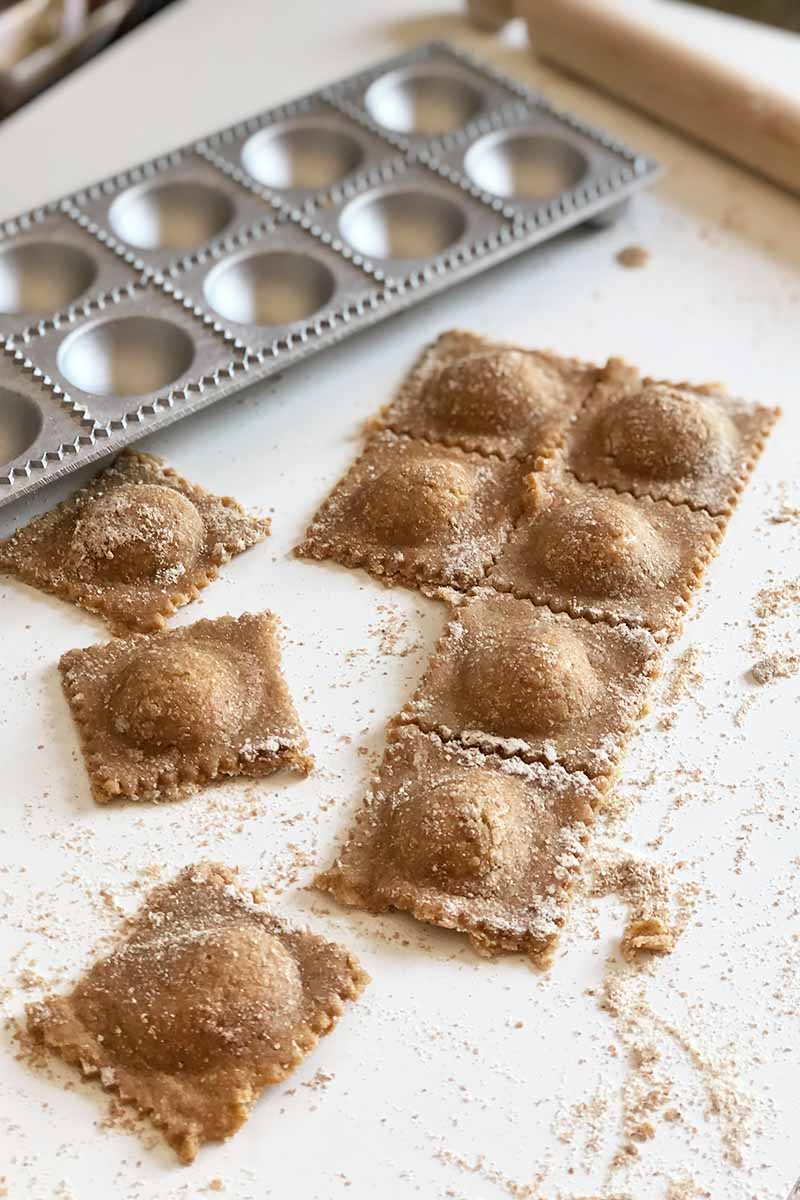
The first thing I should tell you is that I hardly ever eat pasta anymore.
Partly, that’s because a lot of those boxed options are made with types of flour that I avoid. And partly, it’s because there’s something I’ve always hated about the regular stuff, namely that heavy feeling that comes after I eat it. Do you know what I’m talking about?
You finish your plate, pat your stomach, and roll onto the couch, stuck in a motionless overstuffed spaghetti coma. Yeah, I’m not so into that.
So, right off the bat, I can tell you two things my very old-school, totally made-from-scratch dough has going for it:
-
- It’s made with spelt flour so it’s easier to digest for many people than pasta made with standard refined wheat flour, and less likely to leave you feeling overstuffed.
- It’s also about a hundred times easier to make than I’d expected it to be. You just make the dough, let it rest for 20 minutes while you make the filling, split it up, roll it out, and BOOM! You have homemade pasta that’s ready to boil.
I made mine into ravioli because, of all the shapes out there, I’ve always liked those little pillows of ricotta-filled goodness the best. Here’s what happened:
After my dough had rested, I split it in half, took one section to a floured surface, and rolled the heck out of it. When it was thin enough to see light through (almost like a window pane!) I cut it in half, and placed one of those pieces in my ravioli mold. But you could also use the lid of a mason jar to cut out little circles, or a ravioli cutter to cut out each square for filling individually.
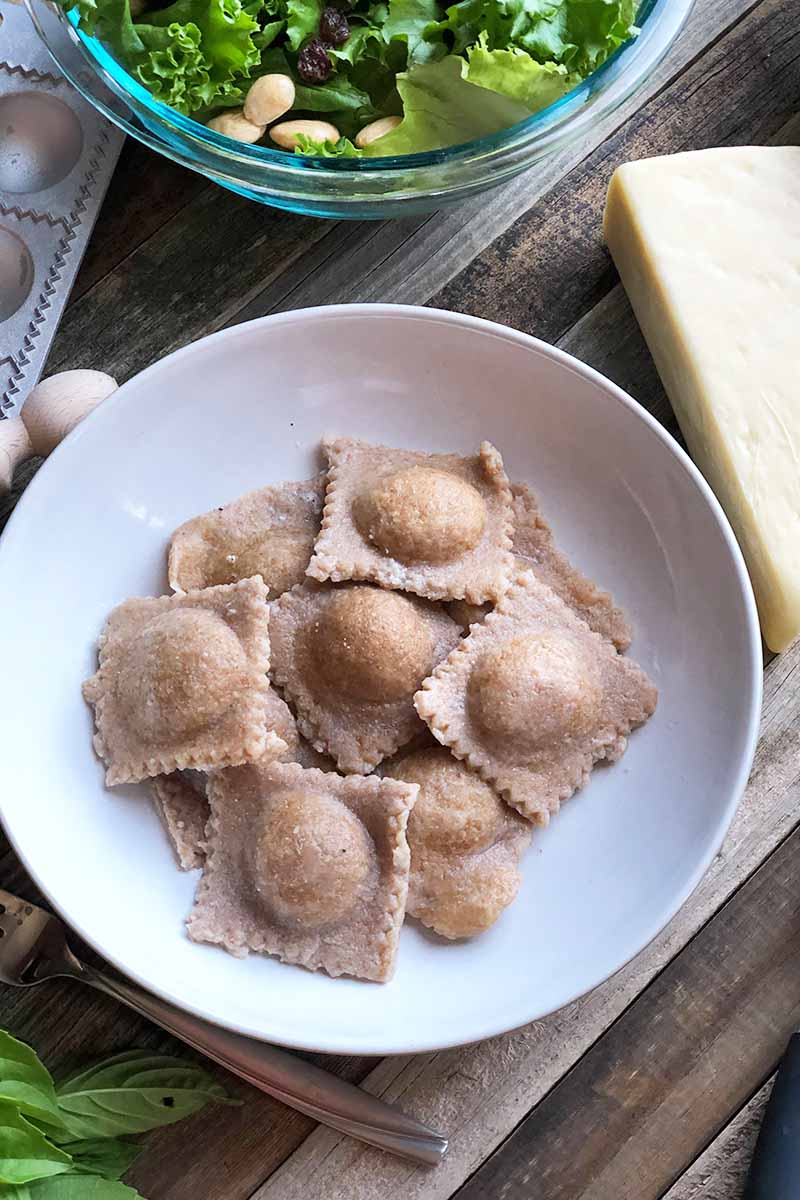
I dolloped about a teaspoon of the ricotta filling onto each section and then brushed the edges with water, creating a glue that holds the dough together when you put the top layer of dough in place, place the second half of the squares that you cut out on top, or fold your dough circles in half.
At this point, you could place the ravioli in a single layer on a baking sheet lined with parchment paper or lightly dusted with flour and stick it in the freezer, then throw them into a zip-top bag to use later. This is what I did with about half of my last batch. Otherwise, they are ready to be plopped into a big pot of lightly salted boiling water and cooked.
The ravioli takes between five and ten minutes to cook, depending on how al dente or soft you like them. I topped these the first time I made them with a meaty tomato sauce, but next time I’d like to do a brown butter sauce, maybe with sage (in the filling and the sauce!) like I did with this gnocchi.
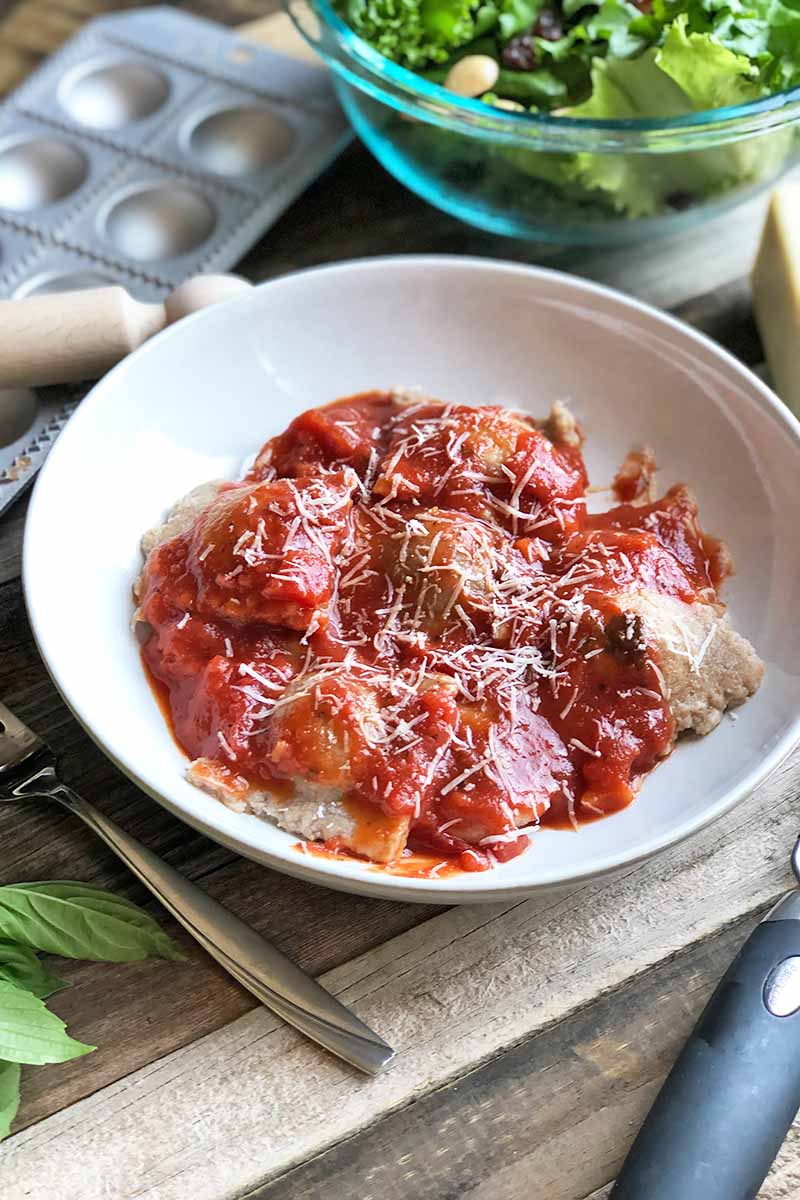
While I was eating soft, cheesy bite after bite off my plate, I had the most amazing sense of accomplishment.
I made ravioli! I can make ravioli! And it tastes like ravioli should! It tastes good!
That alone is worth the hour or so of work required to make these, no kidding. When you make your own from scratch, you’ll see.
Print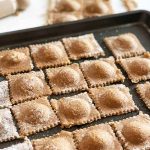
Homemade Spelt Ravioli with Ricotta Cheese Filling
- Total Time: 1 hour, 27 minutes
- Yield: 48 ravioli 1x
Description
Homemade pasta gets a rustic and nutritious makeover with this basil and ricotta-filled spelt ravioli.
Ingredients
For the Pasta:
- 2 cups spelt flour
- 1 teaspoon salt
- 3 large eggs, room temperature
- 2 tablespoons olive oil
For the Filling:
- 1 cup ricotta cheese
- 1 large egg
- 1 teaspoon salt
- 1 teaspoon freshly ground black pepper
- ¼ cup chopped fresh basil
Instructions
- Sift flour and salt together on a clean work surface or in a large, shallow mixing bowl. Set aside.
- In a separate small bowl, whisk together the eggs and olive oil for the pasta.
- Make a well in the center of the flour and pour the egg mixture in the middle. Stir together with your hands or a spoon, and then gently knead into a ball. Shape ball into a disk and cover with plastic wrap. Place in the fridge to rest for 20 minutes.
- While the dough rests, make the filling. In a small mixing bowl, stir together ricotta, egg, salt, pepper, and fresh basil. Place filling in fridge until ready to use.
- After pasta has rested, divide dough into two equal pieces.
- Lightly flour a clean work surface. Starting with one of the pieces, roll out the dough into a thin, rectangular shape. You’ll know the pasta is thin enough when you can see the color of your hand through it. You can also use a pasta roller or roller attachment instead, starting thick and gradually getting thinner with each pass through the rollers.
- Cut a thin, rolled out rectangle in half and carefully place one half of that on a ravioli mold. Gently press a finger into the depressions of the mold to create wells. Place about 1 teaspoon of ricotta filling into each well, and then brush the edges lightly with water. If you do not have a ravioli mold, cut individual squares with a ravioli cutter, or cut out circles with a round cookie cutter, small glass, or the lid of a mason jar. Discard any excess dough. Place about 1 teaspoon of filling in the middle of half of the squares or the top half of all of the circles of dough that you cut out, and brush the edges lightly with water.
- Place the other half of one of the rolled out pasta dough rectangles on top of the filled wells. Using a rolling pin, firmly roll over the top of the mold, sealing and cutting the ravioli. Flip the mold upside down to release them. Place in a single layer on a cookie sheet until ready to boil. If you are working without a mold, center remaining squares of dough on top of filled halves, or fold circles in half to create a half-moon shape, and press firmly around the edges to seal.
- Repeat with the remaining dough and filling.
- Freeze to store, or bring a large pot of salted water to a boil. Carefully drop ravioli into the boiling water and cook for 5-7 minutes, or until al dente.
- Using a slotted spoon, carefully remove cooked ravioli and place in a serving dish. Toss with your sauce of choice and serve.
- Prep Time: 40 minutes
- Cook Time: 7 minutes
- Category: Pasta
- Method: Stovetop
- Cuisine: Italian
Keywords: spelt, ravioli, ricotta, basil
Cooking By the Numbers…
Step 1 – Chop Basil and Measure Ingredients
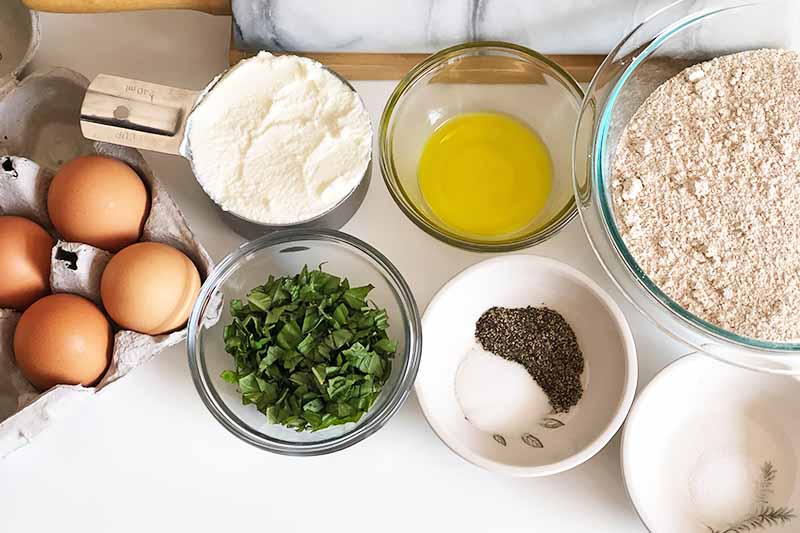
Roughly chop the basil and measure out the rest of the ingredients.
Note: it’s important that your eggs be room temperature as this will affect the consistency of your pasta dough. To bring them to room temperature quickly, place eggs in a small bowl, cover with warm (but not boiling) tap water, and let sit for 5-10 minutes. When you touch them, the eggs should no longer feel cool.
Step 2 – Make Dough
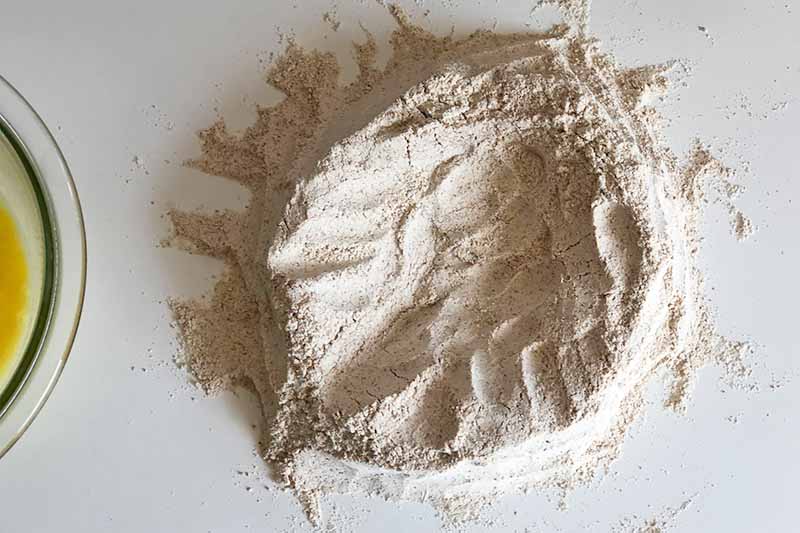
Sift flour and salt together onto a clean work surface, or in a large, shallow mixing bowl. In a separate small bowl, whisk together the eggs for the dough and the olive oil.
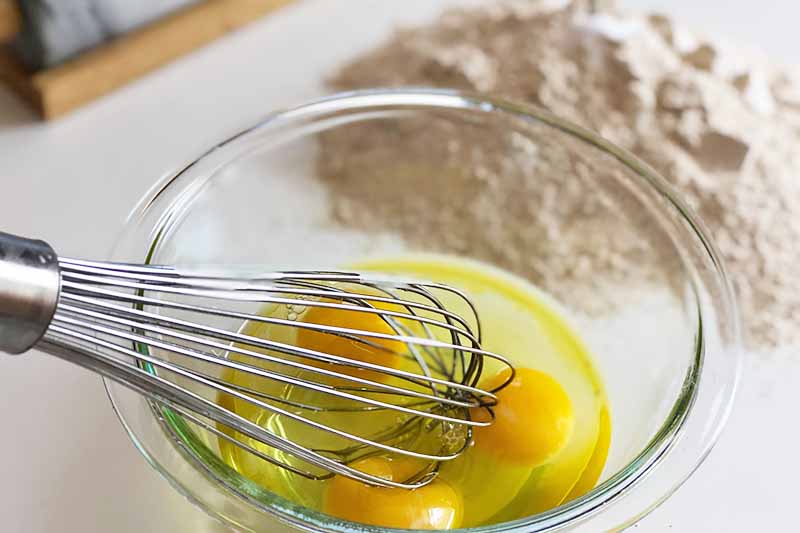
Make a well in the center of the pile of flour and pour the egg and olive oil mixture in the middle.

Stir together with your hands or a spoon, bringing in flour from around the perimeter until it’s all combined, and then gently knead the dough into a ball.
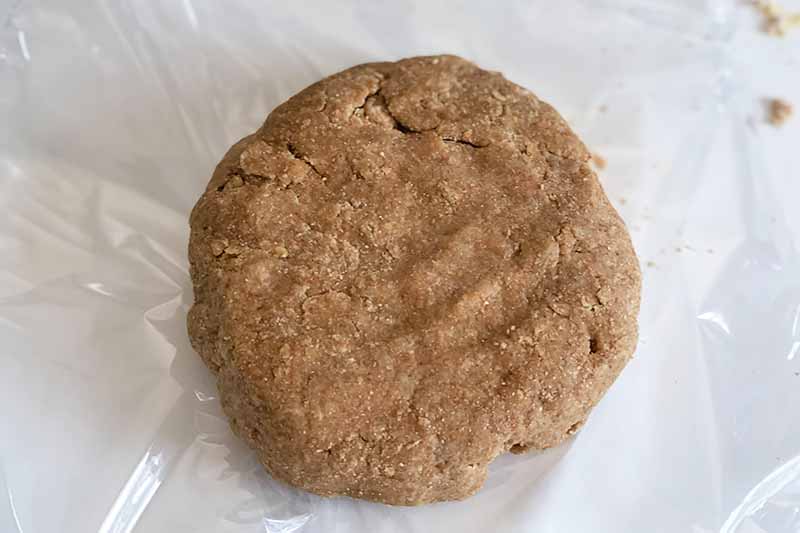
Shape the ball into a flattened disk and cover it with plastic wrap. Place the dough in the fridge to rest for 20 minutes.
Step 3 – Make Ricotta Filling
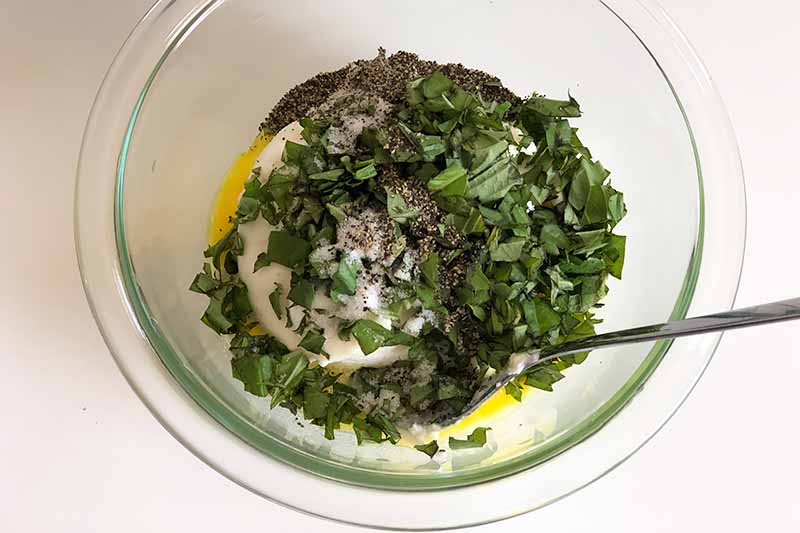
While the dough rests, make the filling. In a small mixing bowl, stir together the fresh ricotta cheese, egg, salt, pepper, and fresh basil. Place the filling in the fridge until you’re ready to use it.
Step 4 – Roll Out Dough
After the dough has rested, divide it into two equal pieces.
To roll out by hand:
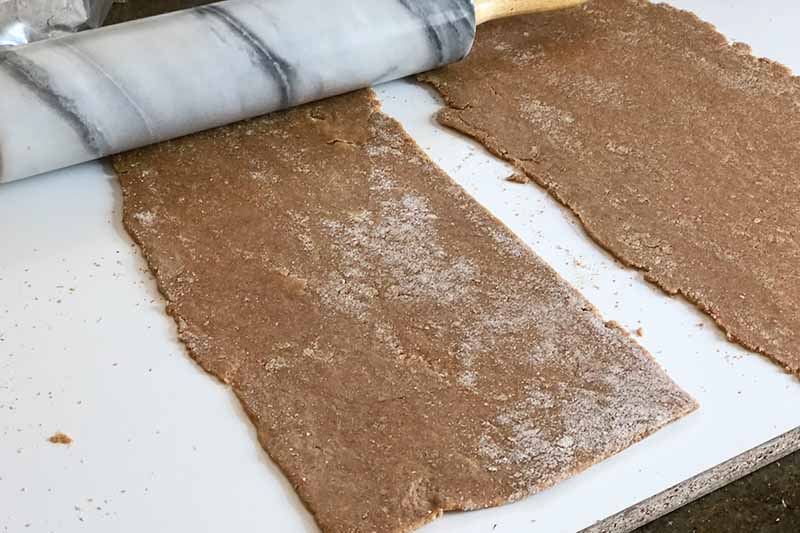
Lightly flour a clean work surface. This can be a kitchen countertop or table, a large cutting board, or a marble slab. Starting with one of the pieces, roll out the dough into a thin rectangle. You’ll know it is thin enough when you can see the color of your hand through it.
To roll out using a pasta machine:
Lightly flour a clean work surface and the rollers of your pasta machine. Flatten out the chilled dough a bit, and shape it into a rectangle.
Set the rollers to their widest setting. Pass the dough through the rollers.
Narrow the rollers by changing the machine setting by one notch, fold the rolled dough in half, then pass it through the rollers again. Dust the rolled dough lightly with flour.
Repeat this process until the sheets are as thin as the recipe requires, or until they’ve been passed through the narrowest setting on your machine.
Step 5 – Fill and Cut
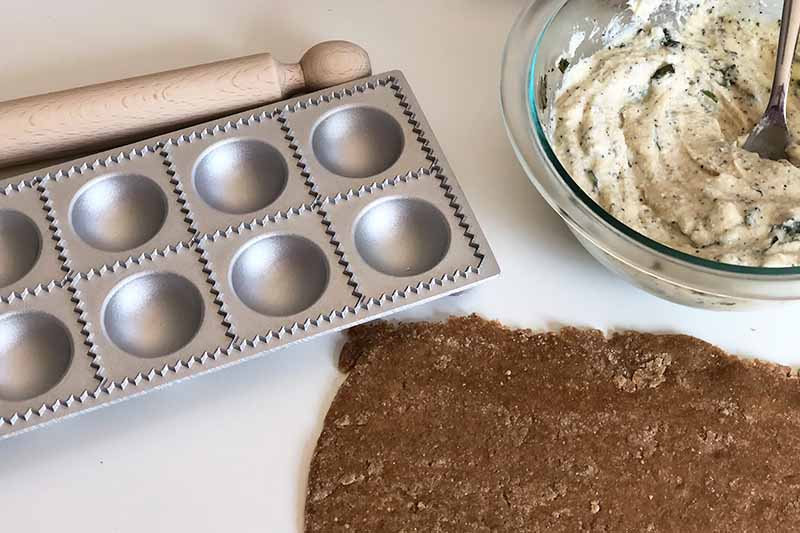
Cut the thin, rolled out rectangle of dough in half and carefully place one half of that on a ravioli mold. Gently press a finger into the depressions of the mold to create wells.
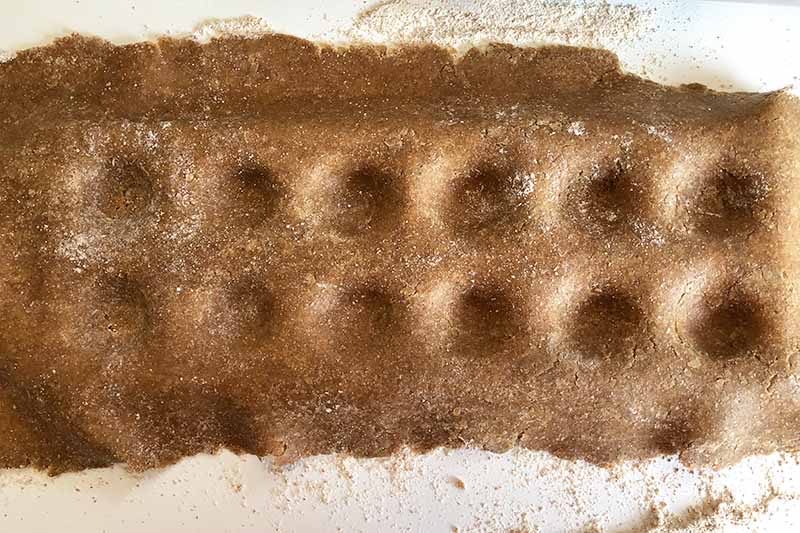
Place about 1 teaspoon of ricotta filling into each well, and then brush the edges lightly with water.
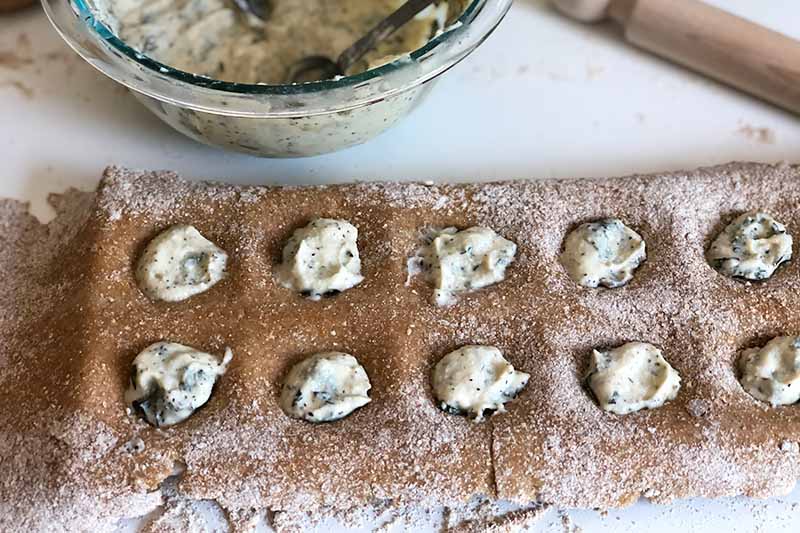
Place the other rectangle of rolled out dough on top of the filled wells. Using a rolling pin, firmly roll along the top of the mold. This will help to seal and cut the ravioli. Flip the mold upside down to release the ravioli. Press around the edges if you find any that haven’t sealed completely.

Place the ravioli in a single layer on a cookie sheet until you’re ready to cook or store them.
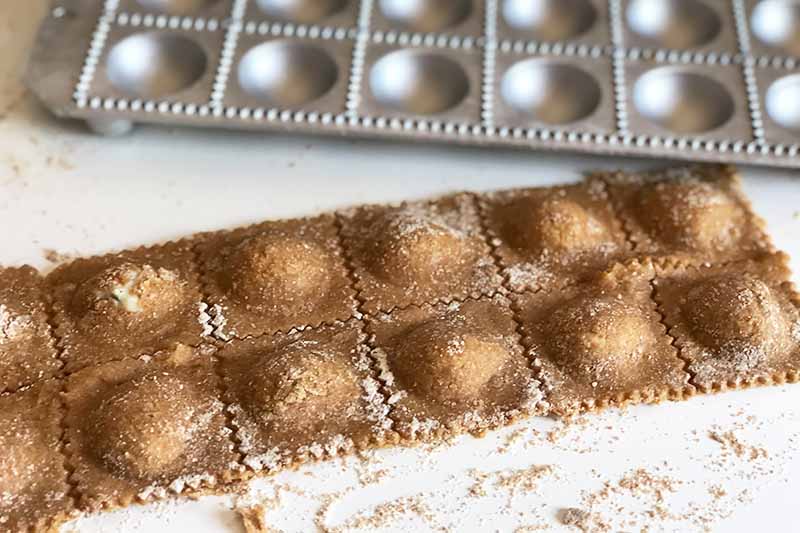
If you don’t have a ravioli mold:
You can also cut out circles using a small glass, a cookie cutter, or even the lid of a mason jar. Place 1 teaspoon of filling on one half of each circle, brush the edges with water, and fold over the other side to create a half-moon shape.
If you have a ravioli cutter, either with straight or ruffled edges, that will work here, too! Cut out as many dough squares as you can, and arrange them on your work surface. Place filling in the center of half of the squares, brush the edges with water, and place the remaining squares on top. Press the edges together to seal.
Any excess dough that is cut off after rolling over the top of the mold or cutting out your dough by hand should be discarded. Re-rolled dough will result in pasta with a tougher texture.
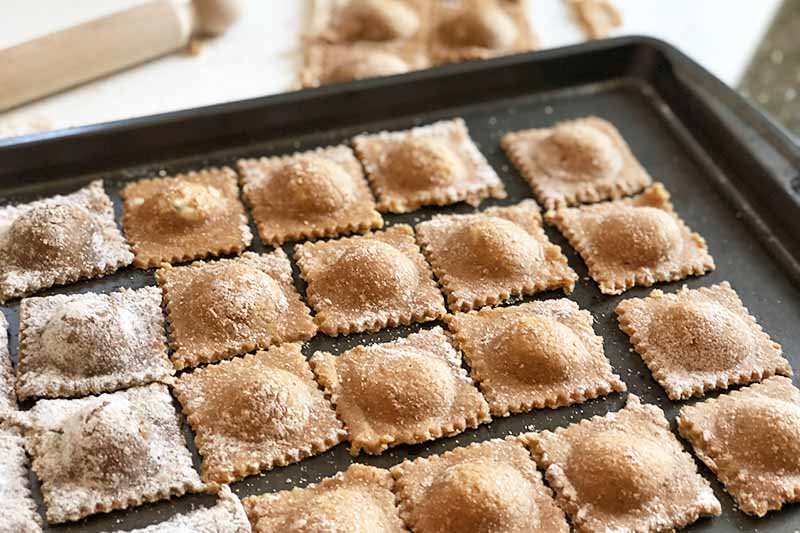
Repeat Steps 4 and 5 with the remaining pasta dough.
Step 6 – Cook and Serve
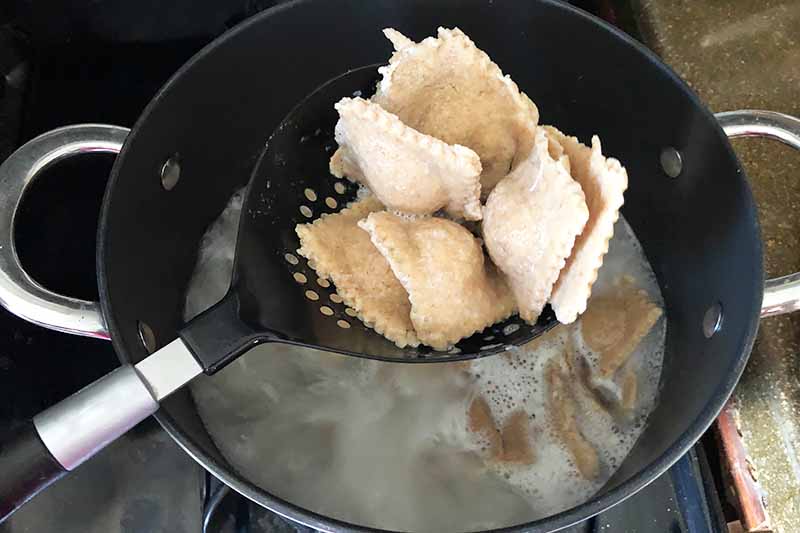
Once all of your ravioli are made, bring a large pot of salted water to a boil. Carefully drop the ravioli into the boiling water and cook for 5-7 minutes, or until al dente.
Ravioli are delicate, so it’s a good idea to turn the heat down a bit while they cook. A rolling boil can cause them to burst, as can too much stirring. Cooked ravioli will float, so stir them gently a few times as they cook, to ensure that what’s been pushed to the top cooks evenly.
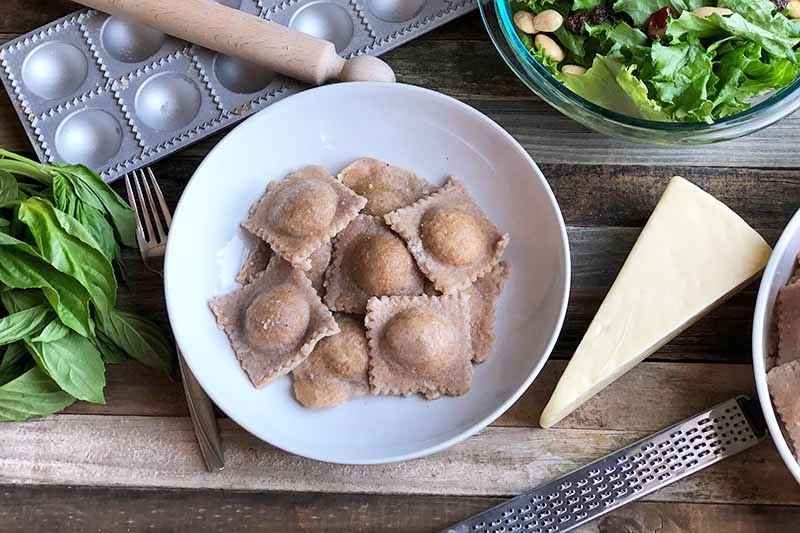
Using a slotted spoon, remove the cooked ravioli and place them in a serving dish. You don’t want to use a colander for this, because too much handling can lead to burst ravioli. Toss gently with your favorite sauce, preheated separately if necessary, and serve immediately.
If you prefer, you can also freeze these and save them for later. The best way to do this is to coat a baking sheet lightly with flour or with a piece of parchment paper, and freeze them individually in a single layer before transferring to a zip-top bag or airtight container.
It’s All About the Sauce
Making homemade ravioli can take several tries before you feel fully satisfied with the looks of your pasta. However, the flavor should be on point every time, which means having a killer sauce to serve on top is key.
While I’m a traditionalist and usually prefer marinara, the heartiness of the spelt flour used for these ravioli would be perfect with a homemade pesto or a creamy pumpkin sauce.
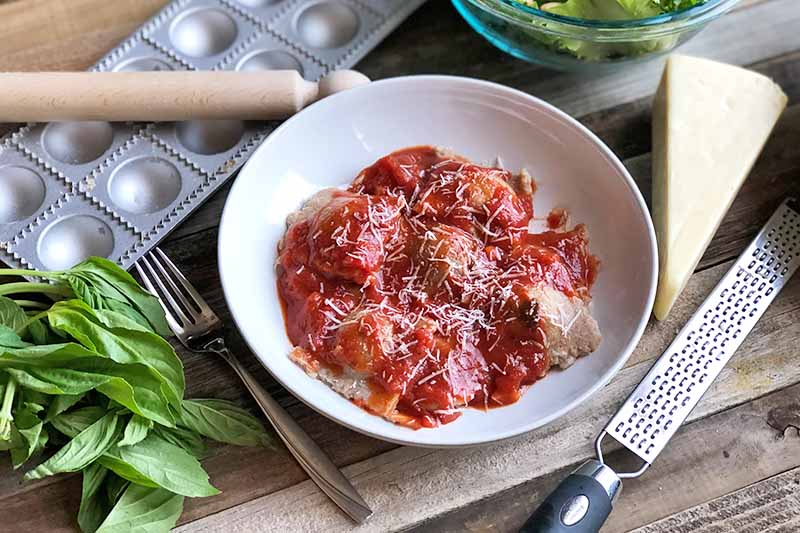
Let us know how you decide to dress up yours in the comments below. And don’t forget to leave a rating after you’ve tried the recipe!
Craving even more delicious homemade pasta now that you’ve pulled your machine and molds out of the closet, or now that you’ve caught the bug for the first time and you’re eager to make more? Try these recipes next:
Photos by Kelli McGrane, © Ask the Experts, LLC. ALL RIGHTS RESERVED. See our TOS for more details. Originally published on July 13, 2010. Last updated on December 26, 2019. With additional writing and editing by Kelli McGrane and Allison Sidhu.
Nutritional information derived from a database of known generic and branded foods and ingredients and was not compiled by a registered dietitian or submitted for lab testing. It should be viewed as an approximation.
The written contents of this article have been reviewed and verified by a registered dietitian for informational purposes only. This article should not be construed as personalized or professional medical advice. Foodal and Ask the Experts, LLC assume no liability for the use or misuse of the material presented above. Always consult with a medical professional before changing your diet, or using supplements or manufactured or natural medications.
About Shanna Mallon
Shanna Mallon is a freelance writer who holds an MA in writing from DePaul University. Her work has been featured in a variety of media outlets, including The Kitchn, Better Homes & Gardens, Taste of Home, Houzz.com, Foodista, Entrepreneur, and Ragan PR. In 2014, she co-authored The Einkorn Cookbook with her husband, Tim. Today, you can find her digging into food topics and celebrating the everyday grace of eating on her blog, Go Eat Your Bread with Joy. Shanna lives in Nashville, Tennessee, with Tim and their two small kids.

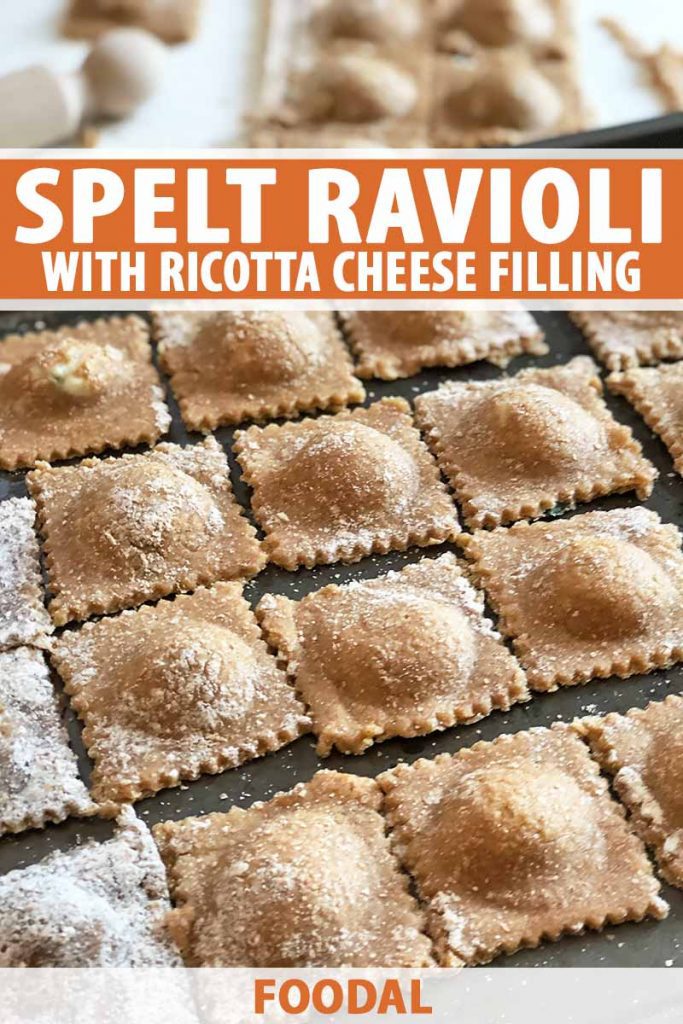
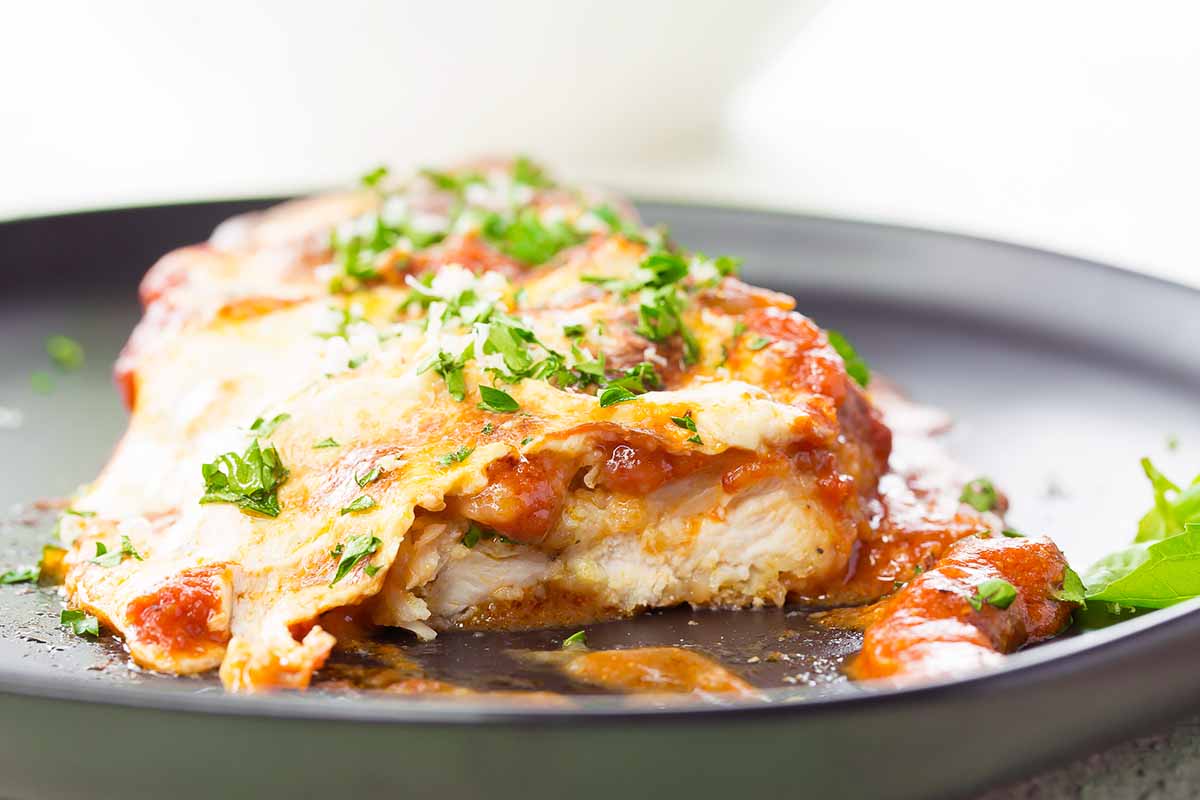

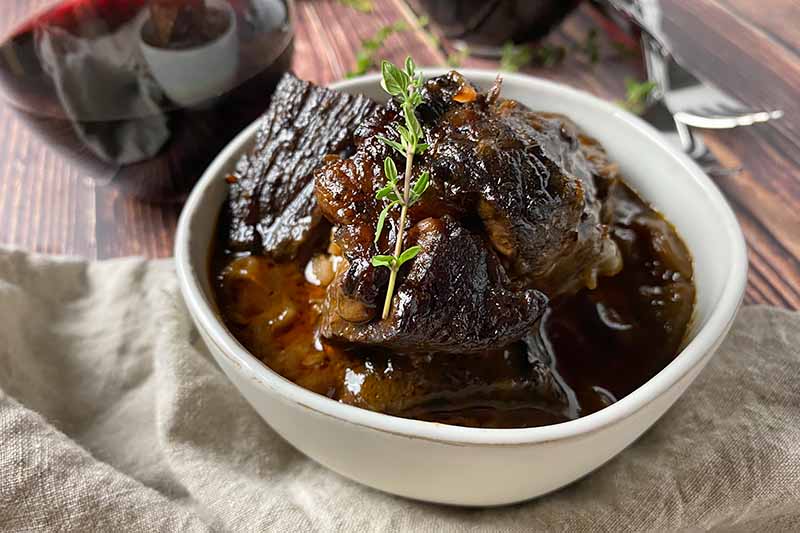
Wow-wee, those look awesome.
What a beautiful post! The pictures are charming and they make me want to make ravioli today! I’ve made it a quite a few times and you’re right, it really is worth the effort.
The thing I love about ravioli is the versatility of the dish–I treat ravioli the same way I treat quiche: whatever I have on hand goes into the filling. Very un-traditional but fun and sometimes surprisingly delicious. As far as I know there are no ravioli police in my neighborhood so I do whatever I want with the filling.
I like to make a brown butter sauce and then finish the plate with toasted bread crumbs. YUM!
Sometimes, dinner needs to get on the table as efficiently as possible. But sometimes, the fun is in the drawn-out preparation. Everything has its place! Glad you got the chance to feel such a sense of accomplishment.
I tried making pasta once, back in high school, and the cuts of linguine ended up thick and doughy. You’re inspiring me to call “do-over!” on that experience.
I used to make pasta. I always made a huge mess and my mom would come in the kitchen, shake her head and then walk right out. I always cleaned it up though 🙂 She never had any problem eating the pasta, but she hate to be around when I was making it. I don’t know how to make pasta I can eat though. I’ll have to check into it. I can’t eat spelt. It makes me less ill than regular wheat, but still can’t digest it.
I’ve always found pasta making to be kind of zen- you roll and repeat and a few simple ingredients meld before your very eyes into pillowy soft pasta dough that tastes like nothing else. Time consuming, yes; but it’s a small amount of time in an otherwise overstuffed day that you create something wonderful. That concept alone should always make it worthwhile.
Do I dare confess that frozen ravioli has been my “convenience” meal for years? I’ll have to rethink that. Homemade sounds like fun actually! Thanks!
yum! i love pasta and have always felt daunted at the thought of making it myself, especially since i own no crazy equipment. but this i can do! looks awesome… i’m definitely going to give this a whirl someday soon!
you did it! you go girl. i like that you used spelt and that you made ravioli…maybe i will try that on my next go round. i’m so so glad you did it an enjoyed it so much. i’m eager to try again…
hope you’re enjoying working from home!
I once made ravioli and they were so good! Definitely worth the time I spent making them. I love the idea of using spelt flour, I’ll have to try it!
Great photos! I love my Barilla pasta (both regular and whole wheat) but I totally am adding the meat sauce from your last post to my never ending list of recipes to try.
Home made pasta has been on my must do one day list forever – maybe soon. I like pasta but do have the post pasta slump if I eat it in the evening and hate that sluggish sleepy feeling, maybe time to try spelt?
I eat pasta less and less these days for all of the reasons you mentioned, but darn it I’m going to have to try these. I’ve been experimenting with lots of different flours in baked goods lately, but I’ve actually never experimented with spelt. Thanks for the inspiration!
OMG. not only do i wish i was your neighbor (yet again),. but i am SO HUNGRY NOW. incredible food. YAY YOU!
so lovely and sounds delicious. i agree with you on pasta – hence very few pasta recipes on my site. unless i make it. which means the apt is covered, and i mean covered in flour.
sigh, the slow removal of processed sugar and white AP flour has me slightly depressed. i’m actually on my way to wegman’s soon to purchase some spelt flour. oh but the things we must do to keep our bodies and spirit whole.
i’m looking fwd to trying this recipe tonight.
Lan, If you should happen to see this before you go, buy the white spelt if you can. The whole grain spelt is better, but the white spelt gives results exactly like AP. I honestly can’t tell a difference! Good luck!
Summer in San Francisco is chilly enough that making ravioli on a weekend day seems like a great idea. I am definitely going to do it.
I love making pasta from scratch. It’s fun because I employ my husband to run the pasta through the machine. It’s one meal where we actually work together. Your ravioli look great! I hope you’re still loving life!
I just wrote a post this weekend with the same thing in mind–that making food from scratch is time consuming and labor intensive but in the end is so so worth it. Your ravioli looks beautiful and tasty.
I love this! An old neighbor that used to watch me when I was a baby when my mom worked made her own pasta. She made it like she was knitting – she did it all the time. I don’t think I ever saw their kitchen table without one of those contraptions that actually turn the dough into spaghetti.
The end results are worth it though.
Anne, Way to see the glass-half-full side of chilly summer nights. I hope you love this!
Redmenace, That sounds like so much fun! I love that you guys do that together. And by the way, yes, I am loving life. Thanks!
Jen, It is indeed. Thank you!
Susan, What a great memory to have – so cool to hear about people who did things like this regularly. Love it!
I love unnecessary, over-involved and time-consuming! So I guess this recipe is right up my alley 🙂 By the way, thanks for stopping by my blog. You have a wonderful blog. Will be back for more.
Cenk, Ha! I love Cafe Fernando and have for some time. Thank YOU for making my day with this comment!
Beautiful! Matt got me an attachment for our Kitchenaid for my birthday and we’ve been making homemade pasta ever since (we always end up making a ton and freezing it). Tonight we cranked out homemade light wheat pappardelle with bolognese. It’s truly stupendous. There’s just no way you can compare it to store-bought pasta. Your ravioli look amazing! I haven’t tried using spelt flour in pasta, but I’m certainly intrigued.
Kasey, Making homemade pasta together sounds so romantic – and light wheat pappardelle with bolognese? That sounds delicious! I’d love to hear your thoughts on spelt if you try it!
thanks so much for sharing this recipe, i’ll be making it again soon, for freezing.
Thanks, Lan! I’m so glad you liked it, and it was fun to read about it at your blog!
Oh oh oh I am getting serious about making this for a very special birthday next week. I need sauce instructions — it seems you need something delicate for this pasta, yes? Can meat be involved for a birthday man/meat lover? Anything else I need to know to make this fool proof?
Anne, Well, to be honest, I used a heavier meaty tomato sauce with these, and it was great! So feel free! And as far as making them foolproof, I swear they’re so easy. Just take your time with the folding maybe. Good luck!
Wow, this is great. Hey Spelty sent me to your website. My son has bad reactions to industrial wheat. I learned to make bagels, breads, pizza dough for the kid. Boy, is he going to be excited to try some spelt pasta at home. Thanks!
Beth, Always nice to meet a fellow spelt lover. Thanks for the comment!
I plan to try this next time I make lasagna
Thanks! Excellent recipe for spelt pasta! Came out great!
Also very down to heart, straightforward presentation. You excellent cook and presenter!
Thank you for this recipe. The dough came out really sticky so I had to keep dusting it as I kneaded but that allowed the dough to stay moist when I wasn’t using it. I feel like I can make spelt pasta for anything now. The ravioli came out delicious, I used vegan cheeses. I’m also interested in seeing if there’s a way to use flax-egg to make it truly vegan.
★★★★★
Could you replace the spelt flour with kamut flour? Thanks!
You can! Just keep in mind that you will probably need to use a little more water when substituting with kamut.
I decided to pick up a bag of spelt flour to see what all the hubbub is about. I made a batch of these and they turned out very good. Next project… flatbread!
★★★★★